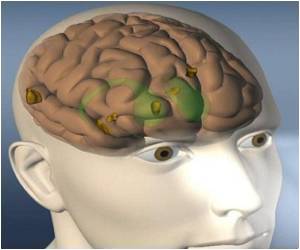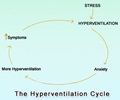Scientists have identified how to predict which patients are at greatest risk of dying in the hospital after stroke by using data from more than 270,000 hospital stroke admissions.

"A mortality risk assessment tool for hospitalized stroke patients is important to clinicians, hospitals and patients," said Eric E. Smith, M.D., M.P.H., lead author of the study and assistant professor of neurology at the Hotchkiss Brain Institute at the University of Calgary in Alberta, Canada.
"Doctors can use this information to find out who is at highest risk and try to help prevent them from dying," he said. "Patients and families can benefit from this information by understanding their prognoses better. Hospitals can use our mortality risk score to calculate the mortality rate that they would expect to see, based on the characteristics of their own patients, and compare that to their actual observed mortality."
Smith and colleagues used the American Heart Association/American Stroke Association Get With The Guidelines®–Stroke registry to analyze hospital stroke admissions from 2001-07.
"This enormous database offers an unparalleled opportunity to learn more about stroke and how stroke care is delivered," Smith said.
They divided patients by those who died and those who survived, analyzed the characteristics of each group and then identified the characteristics that predicted in-hospital death post-stroke.
Advertisement
The researchers found that 5.5 percent of patients admitted for stroke died in the hospital. Being older, arriving by ambulance and having atrial fibrillation (irregular heartbeat) were individually associated with the largest increased risk of dying.
Advertisement
Using the risk score that didn’t include the NIH stroke scale, the researchers predicted that the risk of death was 0.7 percent in the lowest category of risk, while the risk of death was 16.2 percent in the highest category of risk. With the NIH Stroke Scale score, they predicted that risk of death in the lowest category was 0.4 percent, versus 26.8 percent in the highest risk category.
"We showed that the risk score that included the NIH Stroke Scale score made more accurate predictions," Smith said. "Clearly, stroke severity is the most important predictor of outcome — even more important than the person’s age and medical history."
These findings should encourage more care providers to assess their stroke patients using the NIH Stroke Scale, said Ralph Sacco, M.D., president of the American Heart Association. Information and training materials for the NIH Stroke Scale are available for free, including on the American Heart Association website at http://learn.heart.org/ihtml/application/student/interface.heart2/nihss.html.
"In addition to helping in the decision-making process of each stroke patient’s care, this mortality model helps in the big picture of Get With The Guideline data collection and benchmarking by adjusting for differences in patient mix across hospitals," Sacco said.
One limitation of the study is that researchers only examined data on patients with ischemic stroke, caused by a blockage of blood flow to the brain, which accounts for about 85 percent of all strokes. They don’t know whether the predictions are valid for patients with other types of stroke.
Source-Eurekalert















